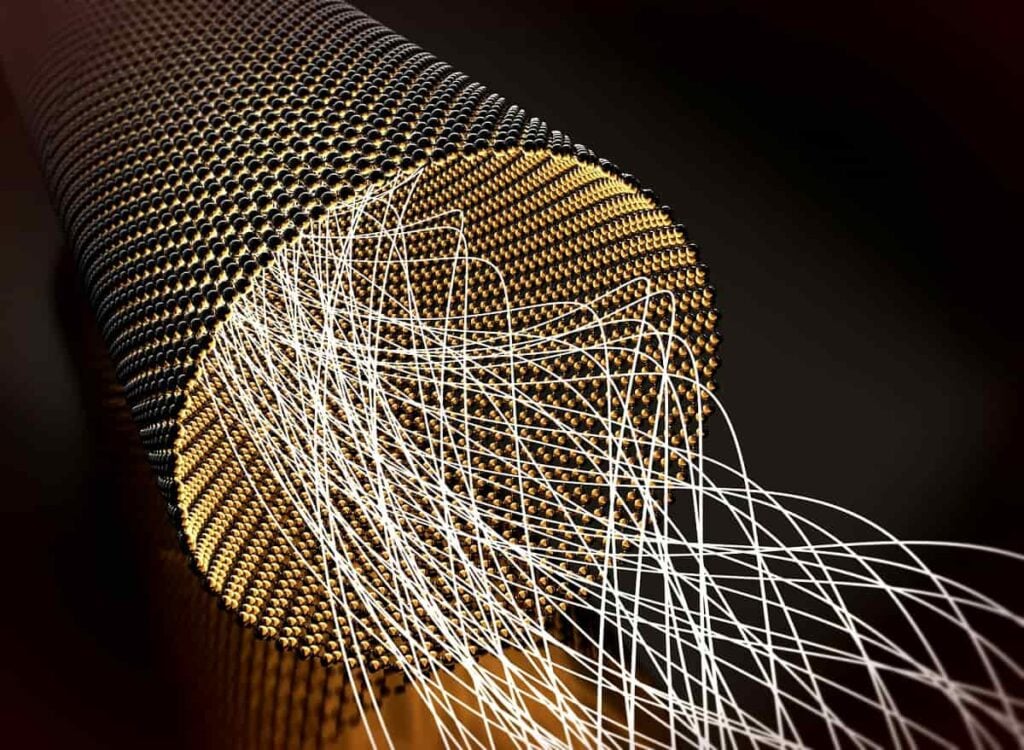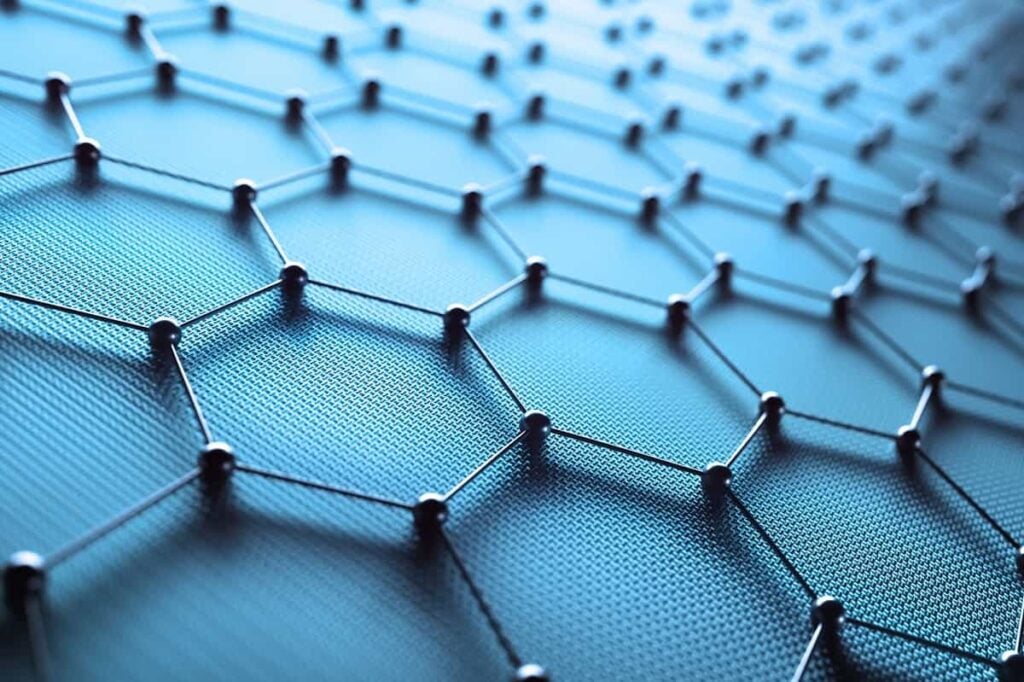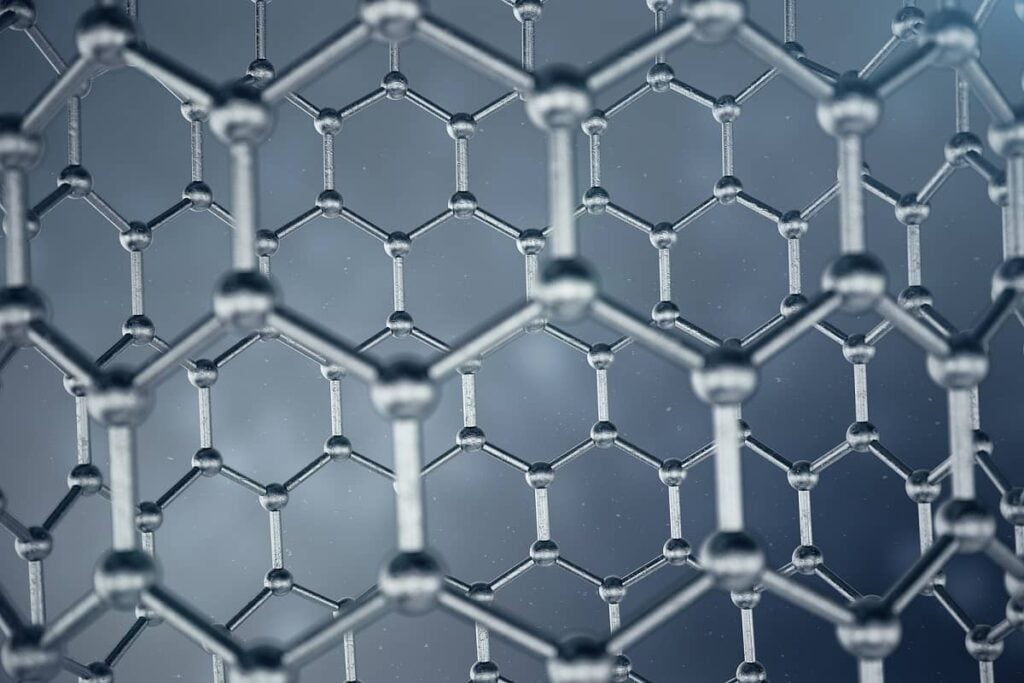10 Startups Commercializing Graphene Products
Table of contents
Table of contents
- 10 Graphene Startups
- Ora - Graphene Headphones
- Paragraf - Hall-Effect Sensors
- Flextrapower - Graphene Face Masks
- Tetrels Technology - Water Filtration
- Cardea - Graphene Transistors
- INBRAIN Neuroelectronics - Graphene on the Brain
- LIGC Application - Graphene Foam
- Integrated Graphene - More Graphene Foam
- Nanotech Energy - Graphene Super Batteries
- Your Sacred Graphene Cow Goes Here
- Conclusion

It’s that time of the year again that we really don’t look forward to. Maybe it’s because our mediocre expectations aren’t even close to being met. We’re just so sick and tired of being let down, year after year. That’s right, it’s time for our annual article on how the commercialization of graphene is right around the corner. No really, this time it’s different.
It’s been about a year since our last piece on graphene, The Long Road to Graphene Commercialization, in which we talked about how the four usual suspects in publicly traded graphene stocks haven’t really accomplished much for investors. Another year, another disappointment, and now we’re starting to run out of metaphors that make for compelling article titles. Will this year be any different for the greatest nanomaterial mankind has ever discovered?
Who cares about stock price performance or market caps, we want to see meaningful revenue growth. Here’s what it doesn’t look like.

The combined revenues for the most recent year of these four graphene companies totals around $13.5 million. When will we see meaningful revenues that show graphene has some traction? Drilling into quarterly revenues for each company doesn’t show much growth happening either.
Perhaps all the graphene action is in startups. Forbes seems to think so, publishing an article last week titled Graphene gets real: Meet the entrepreneurs bringing the wonder substance to market. So, let’s meet some of these graphene startups that are finally bringing us economically viable applications for the most amazing nanomaterial ever – graphene.
10 Graphene Startups
Ora – Graphene Headphones
Founded in 2016, Canadian startup Ora has taken in around $2 million in funding to develop a pair of graphene headphones that started off as a Kickstarter project. We’ve warned readers not to get involved in crowdfunding projects because there’s more downside than upside. It sucks for the companies too. Ora’s comments section on their funding page is full of customers complaining (as of days ago), and it’s not a good look. What does look good is the final product which lets you know right away there’s graphene technology going on – GrapheneQ to be specific.

GrapheneQ is a graphene oxide composite material that has been specifically designed and optimized for use in acoustic transducers. The benefits include:
- Increases the battery life of a Bluetooth audio device by 70% or more while improving sound quality
- Improves the perceived sound quality of audio products while simplifying design complexity
- High-end performance, and significantly higher power handling, at a low price point
We’re not sure what the total addressable market (TAM) is for $500 high-performance headphones, but the real potential is probably all the other high-quality sound equipment applications they can get involved in.
Paragraf – Hall-Effect Sensors
Founded in 2015, U.K. startup Paragraf has taken in around $26 million (19.1 million GBP) in disclosed funding so far to develop “the first commercial application of graphene in an electronic device.” Those are some big words, and they’re backing them up with something called a hall-effect sensor which is used to measure magnetic fields. The sensor developed by Paragraf is meant to be used in demanding environments, like space or CERN’s Large Hadron Collider which some believe is now warping our reality.

It’s all made possible by Paragraf’s proprietary process for depositing single-atom thick, two-dimensional materials, including graphene, directly onto silicon, silicon-carbide, gallium-nitride, and other substrates. Basically, they’re applying a coating that’s 0.1 to 0.5 nanometers thick – about a million times smaller than a human hair. Paragraf’s graphene-powered sensors are now available to lead partners in small volumes.
Flextrapower – Graphene Face Masks
There’s an unwritten rule now that as a founder it is your duty to show how your disruptive tech startup is helping to fight “The Rona.” No article about graphene in 2020 could be considered complete without giving a nod to the graphene facemask. Founded in 2015, New Yawk startup Flextrapower has taken in $1.1 million in disclosed funding to utilize the founder’s extensive expertise in graphene to productize the stuff. The initial product was a remote-monitoring, preventive health tool that detects diabetic foot ulcers before they form. Then, this happened.

The team is now working on another product which involves printing sensors on a compressive sleeve, turning an ordinary t-shirt into a powerful tool for capturing biometrics. Put on that graphene mask and get ready to travel as we cross the George Washington Bridge to visit with our next startup.
Tetrels Technology – Water Filtration

Cleaning up waste in New Joisey isn’t limited to the likes of those who frequent the Bada Bing. Founded in 2017, New Jersey startup Tetrels Technology has taken in around $2.7 million of disclosed funding with the majority coming in the form of an angel round that closed just last month. That money is being used to create “the world’s first graphene-integrated ultrafiltration membrane that doubles the lifespan and efficiency of membrane cartridges, saving the average customer hundreds of thousands of dollars/year.” We copied that verbatim from their LinkedIn profile because their webpage is down. Either they already exhausted their funding and went bust, or they’re too busy executing on the exclusive partnerships they have for mass production of their filters to worry about website availability.
Cardea – Graphene Transistors
Saint Steve Jobs once said that the greatest technological advancements of the 21st century will be at the intersection of biology and technology. Founded in 2013, San Diego startup Cardea Bio has taken in $16.4 million in disclosed funding from investors that included Agilent (A). All that money has been used to integrate biology directly into modern electronics.
Cardea claims to be the only company in the world to be mass-producing biological transistors using graphene. In other words, they’ve built a bridge between electronics and biology. For example, their patented CRISPR-Chip technology has the power to search genomes for specific sequences of interest. Cardea Bio isn’t the only company using graphene to interface with biology.
INBRAIN Neuroelectronics – Graphene on the Brain
Founded in 2019, Spanish startup INBRAIN Neuroelectronics has taken in around $1.5 million in funding to develop “a graphene-based implant able to record electrical activity in the brain at extremely low frequencies and over large areas.” There is a wealth of information found below 0.1 Hz such as the onset and progression of epileptic seizures and stroke. The market for this sort of stuff may be limited right now, but there’s plenty happening in the world of brain-computer-interfaces these days.
Update 03/30/2021: Inbrain Neuroelectronics has raised $16.8 million in Series A funding to advance their first-in-human clinical program, aiming to establish the safety of graphene as the new standard of care for neurotechnology devices. This brings the company’s total funding to $18.4 million to date.
LIGC Application – Graphene Foam
Founded in 2019, Israeli startup LIGC Application has taken in $3 million in disclosed funding which came in the form of a Series A closing just several months ago. The first laser-induced graphene was derived in 2013 and now promises to transform the air filtration market. (Laser-induced graphene (LIG) is a porous graphene foam generated by shooting lasers at carbon-based precursor materials.) Is it better than the best air filter in the world? Who knows, but air filtration is all the rage now because of you know what. Of course, there are plenty of other uses for graphene outside of just air filtration.
Integrated Graphene – More Graphene Foam
You may be tempted to write off graphene production as a viable investment, but some institutional investors think otherwise. Founded in 2016, U.K. startup Integrated Graphene took in $4.16 million (3.1 million GBP) in seed funding last month to develop a “revolutionary design for manufacture process, producing the world’s highest quality pure 3D Graphene Foam, Gii, on any surface, in seconds.” Applications listed on their website include biosensors and a graphene supercapacitor. (The most impressive application of graphene we’ve come across so far was in Estonia where Skeleton Technologies is developing ultracapacitors that achieve a competitive advantage using graphene.) This is a good segue into our next company.
Nanotech Energy – Graphene Super Batteries
We’ve been hearing for decades about how nanotechnology will create super batteries. Some say that battery makers always release improvements in smaller increments than what’s possible, so maybe that’s what’s happening. Regardless, money keeps pouring into the energy storage space. Founded in 2014, Los Angeles startup Nanotech Energy has taken in nearly $31 million in funding, the lion’s share of which came in the form of a $27.5 million Series A which closed this past May.
We first came across the company in our piece on How Lithium-Ion Batteries Will Continue to Improve where we talked about how they were developing a high-performance, non-flammable battery for Daimler Mercedes hybrid and electric automobiles. In October of this year, Nanotech Energy released a line of EMI Shielding products which will hopefully generate revenues into 2021.
Your Sacred Graphene Cow Goes Here
Whenever we do these company “listicles,” we’ll always leave out any number of companies that feel they should have been included. We’re going to preempt your emails. Yes, we did miss your company. That’s because it’s time to eff off now and drink a pint or seven because that’s what dysfunctional families do during the holidays to cope with all the happy people they secretly despise.
If your company has a great story to tell, we’d absolutely love to tell it. If you want to take us up on our content marketing offering, drop us an email with the code ITSAWHITECHRISTMAS and we’ll give you 30% off our list price for a company profile on your great graphene story. Your company will also be included in this listicle as graphene startup number ten. (Offer ends Jan 31st. One coupon per customer. Limited to stock on hand. Reproductions not accepted. Void where prohibited. May contain traces of peanuts.)
Conclusion
In the same way that 3D printing evolved its business model over the years, graphene appears to be doing the same. Turns out it’s not about how much you can produce, it’s about producing small amounts of a superior material that can then be used to add value to products with large TAMs. Niche applications like high-tech sporting goods don’t promise the sort of exponential returns we’re looking for.
For any graphene company, public or private, that plans to announce their success story, investors will expect that to be expressed in consistent double-digit revenue growth. See you in December 2021, graphene.
Sign up to our newsletter to get more of our great research delivered straight to your inbox!
Nanalyze Weekly includes useful insights written by our team of underpaid MBAs, research on new disruptive technology stocks flying under the radar, and summaries of our recent research. Always 100% free.























Have a look at a Graphene company called Zen Graphene .. the lates news is outstanding and they recently had a mask order of 1 billion ????
Thank you for the comment Gary. They trade on the CVE and that share price spike looks shady AF. We’ll add this to our list of things to take a closer look at. Thank you for the heads up.
How about checking out another Canadian graphene company NanoXplore ?
Investing in graphene producers has been a blowout so far. A graphene producer that trades on the TSXV is not something that falls under our mandate except to tell people it’s best avoided based on our experiences.
Take a look at General Graphene Corporation. They are focused on mass producing CVD graphene films at an industrial-scale for a variety of applications.
Thank you for the heads up. That seems to be a private company so tough to get info on.